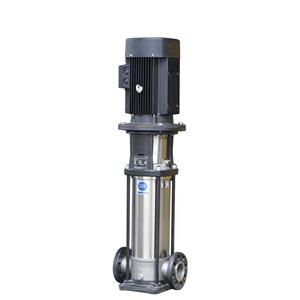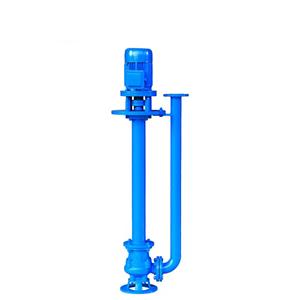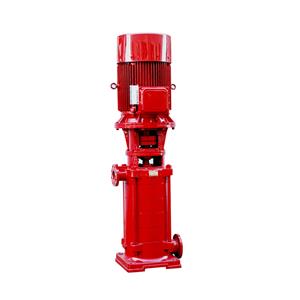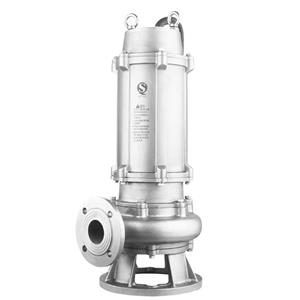Intelligent Pump Remote Operation and Maintenance
Intelligent Pump Remote Operation and Maintenance: IoT Technology Reshaping the Service Value of Pumps
Under the wave of Industry 4.0, the remote operation and maintenance of intelligent pumps have achieved revolutionary breakthroughs through Internet of Things (IoT) technology. This is particularly valuable in regions like the Middle East, where vast territories and a relative scarcity of technical professionals make such innovations crucial. Intelligent pumps not only address the slow response and high costs associated with traditional maintenance but also provide a new paradigm for full lifecycle management of pumps through data-driven decision-making.

I. Core Technical Architecture
The remote operation and maintenance system for intelligent pumps is based on a multi-layer technical architecture:
Perception Layer: Integrated sensors (e.g., flow, pressure, temperature, vibration) collect real-time operational data from the pump.
Transmission Layer: Data is encrypted and transmitted to the cloud platform via wireless protocols such as 4G/5G, NB-IoT, or LoRa.
Platform Layer: A cloud-based big data platform stores and analyzes data, leveraging AI algorithms for fault prediction and energy efficiency optimization.
Application Layer: Users access visualized monitoring, alarm notifications, and remote control functions via Web or APP interfaces.
II. Key Functions and Application Value
Real-Time Monitoring and Intelligent Alarms
The system monitors pump parameters (e.g., current, voltage, vibration) at second-level frequencies. Upon detecting abnormalities (e.g., pressure limits exceeded, current overload), it immediately triggers alerts via SMS, APP push, or other channels. For example, AI analysis of vibration data can predict bearing wear, preventing sudden downtime.
Remote Control and Automation Strategies
Users can remotely start/stop pumps, adjust frequencies, or switch operating modes via mobile devices. The system also supports rule-based automation, such as automatically activating pumps based on water level thresholds or optimizing operating schedules according to peak/off-peak electricity prices, reducing energy costs by 15%–30%.
Predictive Maintenance and Lifespan Management
By analyzing historical data with machine learning, the system predicts component remaining lifespan (e.g., seals, bearings) and automatically generates maintenance work orders. This allows maintenance personnel to plan replacements 30 days in advance, reducing unplanned downtime by over 70%.
Energy Efficiency Optimization and Resource Management
The platform collects pump energy consumption data, generates efficiency reports, and recommends optimal operating parameters. In agricultural irrigation scenarios, integrating soil moisture sensors to dynamically adjust pump flow can reduce water usage by over 30%.
III. Special Value for the Middle East Market
The Middle East's harsh climate (high temperatures, sandstorms) and vast, sparsely populated areas make the advantages of intelligent pump remote operation and maintenance particularly significant:
Reduced On-Site Dependency: Remote monitoring and fault diagnosis can reduce manual inspections by 80%, alleviating the shortage of technical professionals.
Adaptation to Harsh Environments: Sensors and communication devices designed for sand and dust ensure stable operation and data continuity.
Energy Savings: Frequency conversion control and intelligent scheduling help users reduce high electricity costs.
IV. Implementation Challenges and Future Trends
Despite its significant benefits, deploying intelligent pump operation and maintenance systems requires attention to:
Communication Reliability: Redundant communication systems (e.g., cellular networks + satellite backups) are essential in remote areas.
Data Security: TLS/SSL encryption and hierarchical permission management are necessary to prevent malicious attacks.
System Integration: Compatibility with industrial protocols like Modbus and OPC UA is crucial for seamless integration with existing SCADA/MES systems.
In the future, with the adoption of digital twins and AI optimization algorithms, intelligent pump operation and maintenance will evolve toward a closed-loop control system of "prediction-intervention-optimization," ultimately achieving the goal of zero failures and zero waste in smart water management.
Conclusion: Intelligent pump remote operation and maintenance is not only a technological innovation but also a transformation of service models. By connecting physical devices to the digital world through IoT, it provides global users—especially in the Middle East—with more efficient, reliable, and cost-effective pump management solutions, redefining the service standards of the pump industry.




